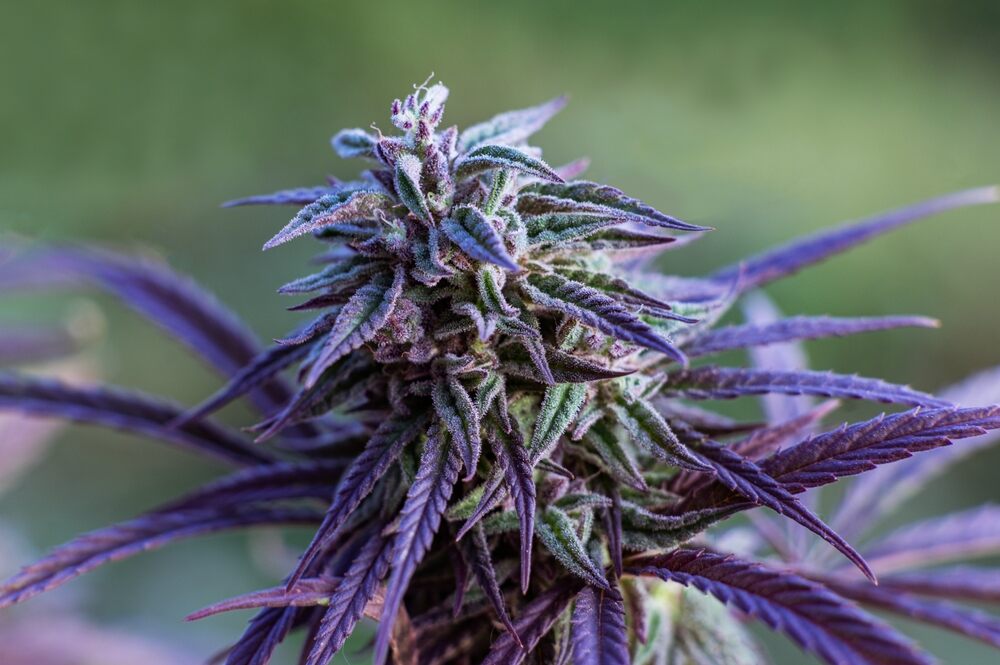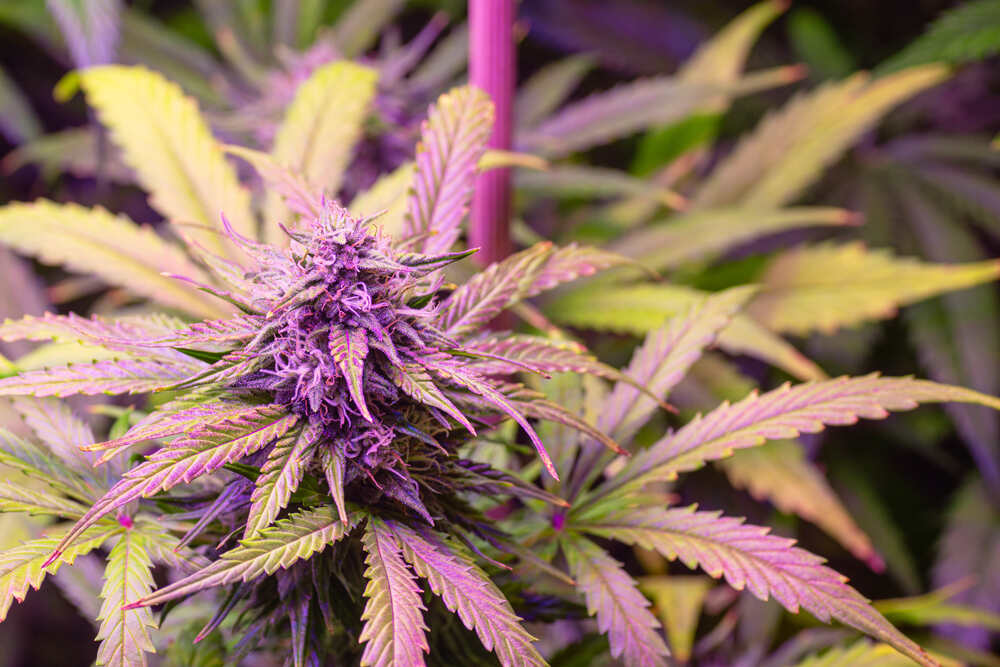The Best Fluffy Pancakes recipe you will fall in love with. Full of tips and tricks to help you make the best pancakes.

Why Is Some Weed Purple?
Have you ever come across purple cannabis and thought, “Why does it look so… royal?” You’re not alone—purple marijuana is a head-turner, and it often sparks curiosity. Whether it’s the striking color or the assumption that it’s somehow “stronger,” purple cannabis has earned its place in stoner lore. But what’s really behind the color? Is it magic, better nutrients, or just genetics? I’m here to break it all down for you, so by the end of this, you’ll be the go-to friend when someone asks, “Why is some weed purple?”
The Science Behind Purple Cannabis
The Role of Anthocyanins in Plant Pigmentation
So, here’s the scoop: the purple color in cannabis comes from pigments called anthocyanins. These pigments belong to the flavonoid family and are responsible for the red, purple, and blue hues in plants. They’re the same pigments that give blueberries and eggplants their deep colors. Anthocyanins don’t just show up for no reason. They become more visible when chlorophyll (the green pigment) breaks down, which usually happens toward the end of the growing cycle or under specific environmental conditions. When the green fades, the purple comes out to play!

How Temperature and Environment Influence Color
If you’re growing cannabis and want those beautiful purple hues, temperature is key. Cool nights, in particular, help bring out the purple by slowing down chlorophyll production and allowing anthocyanins to take center stage. But be careful—you don’t want to stress your plants too much. Dropping the temperature below 50°F can put your plants at risk for problems like mold or stunted growth. Think of it like a gentle nudge, not a shove, toward turning those green leaves purple.
The Effect of pH Levels on Purple Hues
Here’s another fun fact: pH levels can influence how anthocyanins show up. In neutral or slightly acidic conditions, anthocyanins tend to lean more toward blue and purple. If the pH swings too much, though, your cannabis plant might not produce the colors you’re hoping for. Keeping an eye on your soil’s pH can help you manage those pigments and avoid any unpleasant surprises.
Genetic Factors That Cause Purple Weed
Strains Known for Purple Buds
Not all cannabis plants are destined to turn purple. Some strains are genetically predisposed to show off those colors, while others will stay plain old green no matter how hard you try. If you’re looking for purple cannabis, you’ll want to stick with strains like Granddaddy Purple, Purple Haze, and Purple Kush. These strains naturally contain higher levels of anthocyanins and are more likely to turn purple, especially under the right growing conditions.
How Genetics Affect Color and Potency
It’s all in the genes, baby. Genetics are the main factor that determines whether a marijuana plant can turn purple. But here’s where it gets interesting: just because a plant is purple doesn’t mean it’s stronger or more potent. Potency is more about the levels of THC and CBD in the strain, which are also determined by genetics but aren’t connected to color. Purple cannabis can look exotic, but don’t judge a nug by its cover—always check the cannabinoid content!
Examples of Purple Strains (Granddaddy Purple, Purple Haze, etc.)
When it comes to purple strains, Granddaddy Purple, Purple Haze, and Purple Urkle are household names in the cannabis world. They’re not just famous for their looks, either. These strains often boast fruity, grape-like aromas, making them as delicious as they are beautiful. Want to impress your friends at the next smoke session? Bring along some of these purple beauties, and you’ll be the hero of the hour.
The Growing Conditions That Promote Purple Weed
How Cold Temperatures Trigger Purple Colors
Let’s dive a little deeper into how cold temps encourage that purple color. When the weather cools down, it causes a reduction in chlorophyll production. With less green on display, the purple pigments have a chance to pop. Some growers mimic fall conditions indoors by lowering the temperature during the final weeks of flowering. But remember, too much cold can be harmful. Keep your nighttime temps just low enough to bring out the colors but not so cold that your plants start to suffer.
Why Reducing Chlorophyll Reveals Purple Pigments
Chlorophyll is the green pigment that dominates most of a cannabis plant’s life. But as the plant matures and photosynthesis slows down, chlorophyll production drops, revealing the other pigments that were always there, like our friends, the anthocyanins. It’s kind of like watching a magic trick: the green fades away, and suddenly, you’ve got deep purples, blues, and sometimes even reds in its place.
Risks of Forcing Purple Color through Temperature Stress
You might be tempted to crank down the temperature and force those purple hues but hold up—forcing it can do more harm than good. Sudden temperature drops can shock your plants, slow their growth, and even invite mold, especially during the flowering stage. Trust me, moldy purple weed isn’t the vibe you’re going for. Instead, aim for gradual temperature changes and stick with strains that naturally tend to show purple when they’re ready.
Is Purple Cannabis More Potent?
The Myth of Color and Potency
Let’s clear up a common misconception: just because weed is purple doesn’t mean it’s stronger. There’s no scientific connection between the color of marijuana and its potency. Potency is all about the THC and CBD levels, not the shade of your buds. So, while purple weed looks cool, it doesn’t automatically mean a better high.
THC and CBD Levels in Purple Strains
Purple strains can have a wide range of THC and CBD levels, depending on the strain. For example, Granddaddy Purple is known for its high THC content (often over 20%), which makes it a favorite for recreational users seeking a potent experience. On the flip side, some purple strains are higher in CBD, making them great for those who want a more balanced or medicinal effect.
Terpenes and Flavor Profiles of Purple Weed
Purple cannabis isn’t just about looks—it often comes with some pretty unique flavors and aromas, too. Many purple strains have sweet, fruity, and berry-like terpenes, thanks to the anthocyanins that give them their color. So not only does purple weed look exotic, but it often tastes like a sweet treat, with hints of grape or berries.
How to Grow Purple Cannabis
Tips for Maintaining pH Levels for Purple Weed
If you’re growing your own purple marijuana, keeping an eye on your pH levels is a must. Cannabis prefers a slightly acidic environment, and to help those purple pigments shine through, you’ll want to keep your pH around 6.0–6.5. Too far off from that sweet spot, and you might lose out on those beautiful colors.
The Importance of Proper Nutrients
Nutrients also play a big role in helping your cannabis turn purple. Avoid overfeeding your plants with nitrogen during the flowering stage, as this can keep the leaves greener for longer, making it harder for the purple to emerge. Stick with a balanced nutrient mix designed for flowering plants, and you’ll be rewarded with those rich, purple hues.
Common Mistakes in Growing Purple Cannabis
One of the biggest mistakes people make is thinking that any cannabis strain can turn purple if you just grow it the right way. Newsflash: it’s all about genetics. You also want to avoid lowering the temperature too much or too fast, as this can stress your plants and lead to issues like mold. Patience is key when growing purple weed—let your plants take their time, and don’t rush the process.
FAQ
Why does some weed turn purple?
Cannabis turns purple due to anthocyanins, pigments in the plant that become more visible when chlorophyll levels decrease, often triggered by cooler temperatures.
Does purple weed mean it’s stronger?
No, purple weed isn’t necessarily stronger. Potency depends on THC and CBD levels, not the color of the cannabis.
Can all cannabis strains turn purple?
No, only certain strains are genetically predisposed to turn purple. Strains like Granddaddy Purple and Purple Haze are good examples.
How can you make your weed purple?
To bring out purple hues, lower the temperature slightly during the late flowering stage, but make sure the strain has the genetics to turn purple.
What are the best strains for purple weed?
Granddaddy Purple, Purple Haze, and Purple Kush are some of the most popular strains known for their beautiful purple buds.
So, there you have it! Purple weed isn’t just about good looks, it’s a fascinating result of plant genetics and growing conditions. Whether you’re growing your own or just a fan of the aesthetic, understanding why some weed turns purple can help you appreciate those deep, royal hues even more. Plus, now you know that while purple weed might look extra fancy, it’s the cannabinoid content that really matters when it comes to potency.




